Pant Size Chart
Enter your waist, hip, and inseam measurements to find your ideal pants size across different regions.
Your Recommended Pants Sizes
| Region | US Size | UK Size | EU Size | Asia Size |
|---|
Looking for the perfect fit? Check out these Best-Selling Pants.
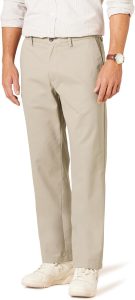
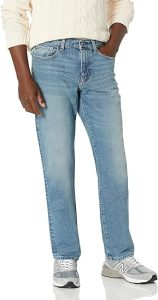
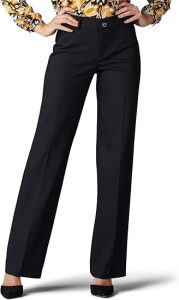
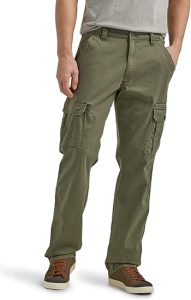
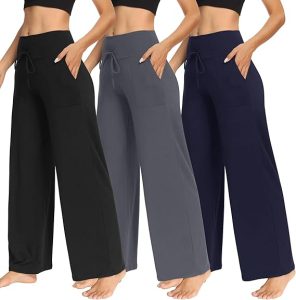
Features:
- Input Fields:
- Users can input their waist, hip, and inseam measurements in inches.
- Dynamic Results:
- Calculates and displays pants sizes for:
- US Sizes
- UK Sizes
- EU Sizes
- Asia Sizes
- Calculates and displays pants sizes for:
- Table Format:
- Results are displayed in a clear table format for easy comparison.
- Responsive Design:
- The tool works well across devices, thanks to simple styling and scalable layouts.
Example Usage:
Input:
- Waist:
32 inches - Hip:
40 inches - Inseam:
30 inches
Output:
| Region | US Size | UK Size | EU Size | Asia Size |
|---|---|---|---|---|
| Pants | 32 | 30 | 36 | 34 |
A Pants Size Chart Tool helps you determine the correct pants size based on waist, hips, and inseam measurements. It can be tailored for men, women, and children, with international size conversions included. Here’s a full version of the chart:
How to Measure
- Waist: Measure around the narrowest part of your waist (usually just above the belly button).
- Hips: Measure around the fullest part of your hips.
- Inseam: Measure from the top of your inner thigh down to the bottom of your ankle.
- Outseam (optional): Measure from the waist to the ankle along the outer leg.
Men’s Pants Size Chart
| US Size | Waist (in) | Waist (cm) | Hip (in) | Hip (cm) | Inseam (in) | Inseam (cm) |
|---|---|---|---|---|---|---|
| 28 | 28-29 | 71-74 | 34-35 | 86-89 | 30-32 | 76-81 |
| 30 | 30-31 | 76-79 | 36-37 | 91-94 | 30-32 | 76-81 |
| 32 | 32-33 | 81-84 | 38-39 | 96-99 | 31-33 | 79-84 |
| 34 | 34-35 | 86-89 | 40-41 | 101-104 | 31-33 | 79-84 |
| 36 | 36-37 | 91-94 | 42-43 | 107-109 | 32-34 | 81-86 |
| 38 | 38-39 | 97-99 | 44-45 | 112-114 | 32-34 | 81-86 |
| 40 | 40-41 | 101-104 | 46-47 | 117-119 | 33-35 | 84-89 |
Women’s Pants Size Chart
| US Size | Waist (in) | Waist (cm) | Hip (in) | Hip (cm) | Inseam (in) | Inseam (cm) |
|---|---|---|---|---|---|---|
| 0 (XS) | 24-25 | 61-64 | 33-34 | 84-86 | 28-30 | 71-76 |
| 2 (XS) | 25-26 | 64-66 | 34-35 | 86-89 | 28-30 | 71-76 |
| 4 (S) | 26-27 | 66-69 | 35-36 | 89-91 | 29-31 | 74-79 |
| 6 (S) | 27-28 | 69-71 | 36-37 | 91-94 | 29-31 | 74-79 |
| 8 (M) | 28-29 | 71-74 | 37-38 | 94-97 | 30-32 | 76-81 |
| 10 (M) | 29-30 | 74-76 | 38-39 | 97-99 | 30-32 | 76-81 |
| 12 (L) | 30-31 | 76-79 | 39-40 | 99-102 | 31-33 | 79-84 |
| 14 (L) | 31-32 | 79-81 | 40-41 | 102-104 | 31-33 | 79-84 |
| 16 (XL) | 32-33 | 81-84 | 41-42 | 104-107 | 32-34 | 81-86 |
Kids’ Pants Size Chart
| Age | US Size | Waist (in) | Waist (cm) | Hip (in) | Hip (cm) | Inseam (in) | Inseam (cm) |
|---|---|---|---|---|---|---|---|
| 2-3 Y | 2T/3T | 19-20 | 48-51 | 20-21 | 51-53 | 14-16 | 36-41 |
| 4-5 Y | 4T/5T | 20-21 | 51-53 | 22-23 | 56-58 | 17-19 | 43-48 |
| 6-7 Y | XS (6-7) | 21-22 | 53-56 | 23-24 | 58-61 | 20-22 | 51-56 |
| 8-9 Y | S (8-9) | 22-23 | 56-58 | 25-26 | 64-66 | 23-25 | 58-64 |
| 10-11 Y | M (10-11) | 23-24 | 58-61 | 27-28 | 69-71 | 26-28 | 66-71 |
| 12-13 Y | L (12-13) | 24-25 | 61-64 | 29-30 | 74-76 | 27-29 | 69-74 |
International Size Conversion
| US Size | UK Size | EU Size | Waist (in) | Waist (cm) |
|---|---|---|---|---|
| 28 | 28 | 44 | 28 | 71 |
| 30 | 30 | 46 | 30 | 76 |
| 32 | 32 | 48 | 32 | 81 |
| 34 | 34 | 50 | 34 | 86 |
| 36 | 36 | 52 | 36 | 91 |
| 38 | 38 | 54 | 38 | 97 |
How to Use the Chart
- Measure your waist, hips, and inseam.
- Match your measurements to the appropriate chart for men, women, or kids.
- If between sizes, size up for a looser fit or down for a tighter fit.
Let me know if you need help with additional details, such as fit types (slim, regular, or loose) or specific brand conversions!
Frequently Asked Questions
1. How do I know my pant size?
- To determine your pant size, you need to measure your waist and inseam (length of the pants from the crotch to the ankle). Typically, pant sizes are written as Waist x Inseam (e.g., 32×34). Waist measurement is around your natural waistline, and inseam is measured from the crotch to the bottom of the leg.
2. What do numbers like 30, 32, 34, etc., mean in pant sizes?
- These numbers generally represent the waist measurement in inches. For example, if you wear a size 32, that means your waist measures 32 inches. The second number (inseam) represents the length of the pants in inches.
3. Are pant sizes universal across all brands?
- Pant sizing can vary slightly between brands, especially when it comes to fit (slim, regular, loose) or style. It’s always a good idea to check the specific size chart for each brand or retailer. Some brands use a different sizing system, like small, medium, or large.
4. How can I convert pant sizes from US to UK or European sizing?
- The sizing conversion between US, UK, and European measurements can differ. Generally, the US size is two sizes smaller than the UK size and four sizes smaller than the European size. For example:
- US 32 = UK 32 = EU 48
- US 34 = UK 34 = EU 50 It’s always best to refer to a specific brand’s conversion chart.
5. What is the difference between regular, slim, and relaxed fit?
- Regular fit pants are a classic cut, offering a straight leg and more room in the thigh and waist.
- Slim fit pants have a narrower cut, offering a more fitted, modern look.
- Relaxed fit pants have a looser fit, providing more space in the waist and thigh areas.
6. What should I do if my pants are too tight or loose?
- If your pants are too tight, you may need to go up a size or look for a different fit (e.g., relaxed or loose fit). If they are too loose, you may need to size down or try a different style, such as slim fit. Adjusting the waist with a belt or tailoring might also help.
7. How do I measure my inseam?
- To measure your inseam, stand straight and measure from the crotch (where the legs meet) down to the desired pant length (usually just below the ankle). It’s easier to measure with a well-fitting pair of pants or jeans to get the right length.
8. What if my waist size is different from my inseam length?
- Many stores offer pants with different waist and inseam options. If your waist and inseam measurements differ, you might need to buy two separate sizes or look for brands that offer customizable length options (like tailoring services).
9. What is the “rise” in pant sizing?
- The rise refers to the distance from the crotch to the top of the waistband. Pants typically come in three rises:
- Low rise: Sits below the waistline.
- Mid rise: Sits around the natural waistline.
- High rise: Sits above the waistline, often near or at the belly button.
10. How do I choose the right pant size for my body type?
- Consider your body shape when selecting a fit:
- Slim body type: Opt for slim or straight leg styles.
- Athletic body type: Look for relaxed or regular fits to accommodate muscular thighs.
- Curvy body type: High-rise or bootcut styles can help balance proportions.
Conclusion:
The pant sizes can be a bit tricky at first, but knowing how to measure your waist, inseam, and understanding the fit options will make shopping much easier. Always check the size charts of different brands, as sizing can vary. Whether you’re looking for regular, slim, or relaxed fits, choosing the right size and fit ensures both comfort and style.
If you’re ever uncertain, trying on pants or seeking professional tailoring can help you find the perfect pair. Ultimately, the right pant size should feel comfortable and flattering for your body type.
More Tools






